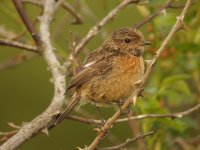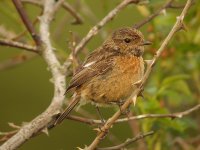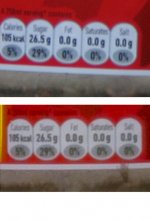JGobeil
Nature Photographer
Kevin,
I was writing my last post when you uploaded yours. Sorry I have not read it before posting.
IMO, the DSLR picture you submit cannot be compared to the digiscoped one since they are not the same size. This is unfortunately the problem with those tests that are anything but valid scientific meaningful tests. However, they sure are a lot of fun and give us good indications as long as we do not take anything for granted.
I should tell you that I have worked quite hard to extend the reach of a DSLR and I think I know what I am talking about. I started with a 10D and a 28-300 Tamron - not enough reach. Added a Tamron TC - still not enough reach and I lost quality... Moved to a 20D to get more MPX - it made cropping more effective and added some reach. Bought a Canon 100-400 IS L - huge improvement but still not enough reach. Added a 1.4X Canon TC - some improvement but not all the time - still not enough reach. Added a 2.0X Canon TC - very soft but ok for ID pictures. I also worked quite hard in PS to learn how to crop, enlarge, sharpen and correct properly - still not enough range.
Improving range is the problem in birding for most of us. Unfortunately I don't have the budget to buy one of the Canon big guns.
Last Spring, I got my first scope, a Vortex Skyline - 20x60 80mm. Is not a top quality scope but it is surprisingly good. I have made a few attempts at digiscoping with it with so-so results. Tried a P5000 and got soft pictures, probably my fault but I couldn't live with the slow focus anyway. Also tried a A640 and could not get rid of vignetting, no matter what I tried and believe me I did try because I loved this camera. Also tried an old Pentax 3mpx and got decent results but the 3mpx and lack of lens threads were a problem. Also tried my 20D with a 50mm f/1.8 and I quickly understood why most people don't go the DSLR route for digiscoping. Finally, last week I bought a used A95 for a good price, a camera that is known to work well - I should get it tomorrow and will use it for a while to gain expertise.
As you can see I don't have much experience if not at all digiscoping but I know quite a bit about the technique, having read everything there is on the Web. I have also studied a lot of pictures and I think I know what it can do and cannot do.
I was writing my last post when you uploaded yours. Sorry I have not read it before posting.
IMO, the DSLR picture you submit cannot be compared to the digiscoped one since they are not the same size. This is unfortunately the problem with those tests that are anything but valid scientific meaningful tests. However, they sure are a lot of fun and give us good indications as long as we do not take anything for granted.
I should tell you that I have worked quite hard to extend the reach of a DSLR and I think I know what I am talking about. I started with a 10D and a 28-300 Tamron - not enough reach. Added a Tamron TC - still not enough reach and I lost quality... Moved to a 20D to get more MPX - it made cropping more effective and added some reach. Bought a Canon 100-400 IS L - huge improvement but still not enough reach. Added a 1.4X Canon TC - some improvement but not all the time - still not enough reach. Added a 2.0X Canon TC - very soft but ok for ID pictures. I also worked quite hard in PS to learn how to crop, enlarge, sharpen and correct properly - still not enough range.
Improving range is the problem in birding for most of us. Unfortunately I don't have the budget to buy one of the Canon big guns.
Last Spring, I got my first scope, a Vortex Skyline - 20x60 80mm. Is not a top quality scope but it is surprisingly good. I have made a few attempts at digiscoping with it with so-so results. Tried a P5000 and got soft pictures, probably my fault but I couldn't live with the slow focus anyway. Also tried a A640 and could not get rid of vignetting, no matter what I tried and believe me I did try because I loved this camera. Also tried an old Pentax 3mpx and got decent results but the 3mpx and lack of lens threads were a problem. Also tried my 20D with a 50mm f/1.8 and I quickly understood why most people don't go the DSLR route for digiscoping. Finally, last week I bought a used A95 for a good price, a camera that is known to work well - I should get it tomorrow and will use it for a while to gain expertise.
As you can see I don't have much experience if not at all digiscoping but I know quite a bit about the technique, having read everything there is on the Web. I have also studied a lot of pictures and I think I know what it can do and cannot do.






